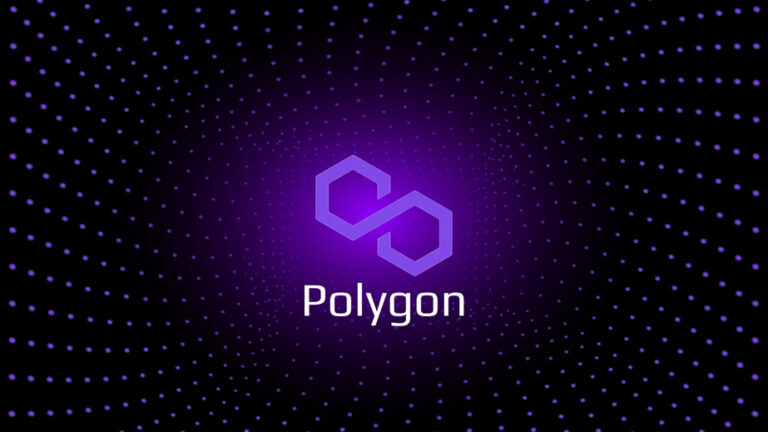
George Spencer
Polygon (MATIC): Ethereum’s Internet of Blockchains

Newer coins are sometimes disregarded in a market with over 5,000 cryptocurrencies, each with its unique set of values and financial rules. However, Polygon’s MATIC stands out. MATIC, Polygon’s native currency, was launched in late 2017 and is currently among the top 15 cryptocurrencies by market value, with a gain of over 30% this week despite other crypto prices plunging in a market-wide decline.
In this article, we’ll take a look at what the MATIC is, how it works, and what makes it stand out among hundreds of other projects to better grasp Polygon’s vision and how it hopes to create the blockchain industry’s borderless future.
What is Polygon (MATIC)?
Polygon is a scalability platform and framework for connecting and developing Ethereum-compatible blockchain networks. Because one of Polygon’s key aims is to aggregate scalable solutions to enable a multichain Ethereum environment, the network also refers to itself as ‘Ethereum’s internet of blockchains’.
The Polygon network is Ethereum-native, oriented to be compatible with all of Ethereum’s current and future infrastructures while also providing a foundation for layer-2 solutions, sidechains, and sovereign blockchains.
History
Polygon began as Matic Network, but as the scope of their initiative evolved, they renamed as Polygon. Matic Network began as a Layer 2 scaling solution, but has now evolved into a self-sustaining, collaborative, and participatory Ethereum blockchain ecosystem.
Polygon was created by Jaynti Kanani, Sandeep Nailwal, and Anurag Arjun in October 2017. Polygon’s CEO, Jaynti Kanani, is a blockchain engineer and full-stack developer. He worked as a Data Scientist for Housing.com before launching Polygon. At Persistent Systems, he began his career as a Senior Software Engineer. Jaynti graduated from Dharmsinh Desai Institute of Technology with a Bachelor of Engineering in Information & Technology.
Polygon switched to its network later in 2019, however they were already operating on the Ethereum network.
How it Works
On a regular basis, polygon validators perform and process checkpoints against the Ethereum main chain. This approach uses cryptographic evidence to resolve any transaction conflicts that may emerge on the sidechain. This protocol also allows users to transfer tokens across MATIC without having to worry about third-party risks or market liquidity limits. Tokens that leave the Ethereum network are frozen and shown on the MATIC network in a one-to-one ratio as freshly minted pegged tokens. The pegged tokens are burned when the user returns to the Ethereum network.
Polygon’s functioning relies on the Ethereum network’s security, but it’s the ability to maintain security while allowing for scalability that makes it exciting. Polygon has already implemented and is running Ethereum 2.0’s proof-of-stake technology, which is expected to be released early next year. This is in contrast to Ethereum’s existing proof-of-work consensus method, which is both costly and inefficient in terms of processing resources.
Polygon uses the Heimdall architecture, which was popularized by Cosmos, in addition to the proof-of-stake consensus mechanism. Unlike traditional proof-of-work blockchains, which enable any participant (miner) to validate transactions and build blocks, Heimdall chooses block producers from the network’s proof-of-stake validators at random.
This dual-consensus technique encourages decentralization while yet allowing for high transaction throughput, leading in network scalability. Internal test networks have seen over 7,000 transactions per second (TPS) on a single sidechain, much above the Ethernet mainnet’s current capability of 14 TPS.
What Makes It Stand Out?
The Polygon project is one of the more recent attempts at blockchain interoperability and scalability, and it aims to alleviate some of the apparent constraints of projects like Polkadot and Cosmos. For starters, it’s compatible with the Ethereum Virtual Machine, making it more accessible to individuals who are already familiar with Ethereum and Solidity programming; Cosmos, on the other hand, employs a WASM-based virtual machine.
Another special feature of Polygon is that its security protocol is optional, allowing blockchains to maintain their autonomy. As a result, without using Polygon’s security-as-a-service approach, linked blockchains can have complete compatibility with the Ethereum mainchain. Polygon’s versatility is critical for developers who want to create fully interoperable dApps that take advantage of the benefits of numerous linked blockchains.
Lastly, in these times of fast technological progress, Polygon’s well-rounded approach to scaling solutions helps future-proof the network. Polygon does not risk becoming outdated since it provides different scaling techniques. This ensures that they do not become obsolete if one solution becomes the industry standard in the future.
Bottomline
While the cryptocurrency markets are on the verge of becoming mainstream, there are still a number of recognized and unknown risks. Layer 2 technologies like Polygon, on the other hand, provide a tremendous opportunity to participate in the ever-expanding world of decentralized finance without having to pay excessive transaction fees to miners, even if layer 1 networks continue to suffer from network congestion. Polygoin may be a profitable investment in the near future, thanks to solid cooperation and significant upgrades to its methodology.
Latest
Altcoins
09 May 2024
Altcoins
19 Apr 2024
Altcoins
16 Jan 2024
Altcoins
31 Aug 2023
Altcoins
24 Jun 2023
Altcoins
24 Jun 2023













